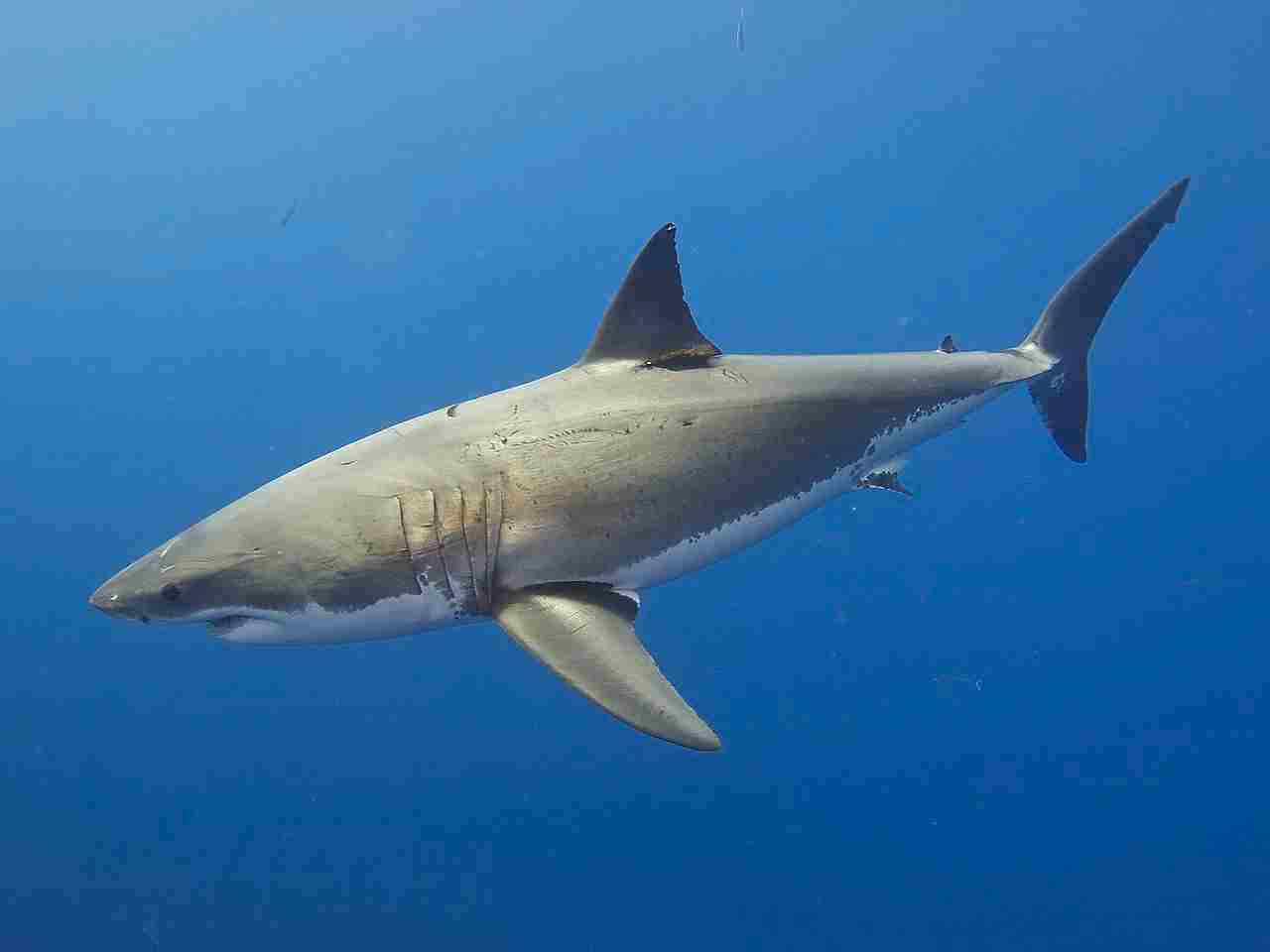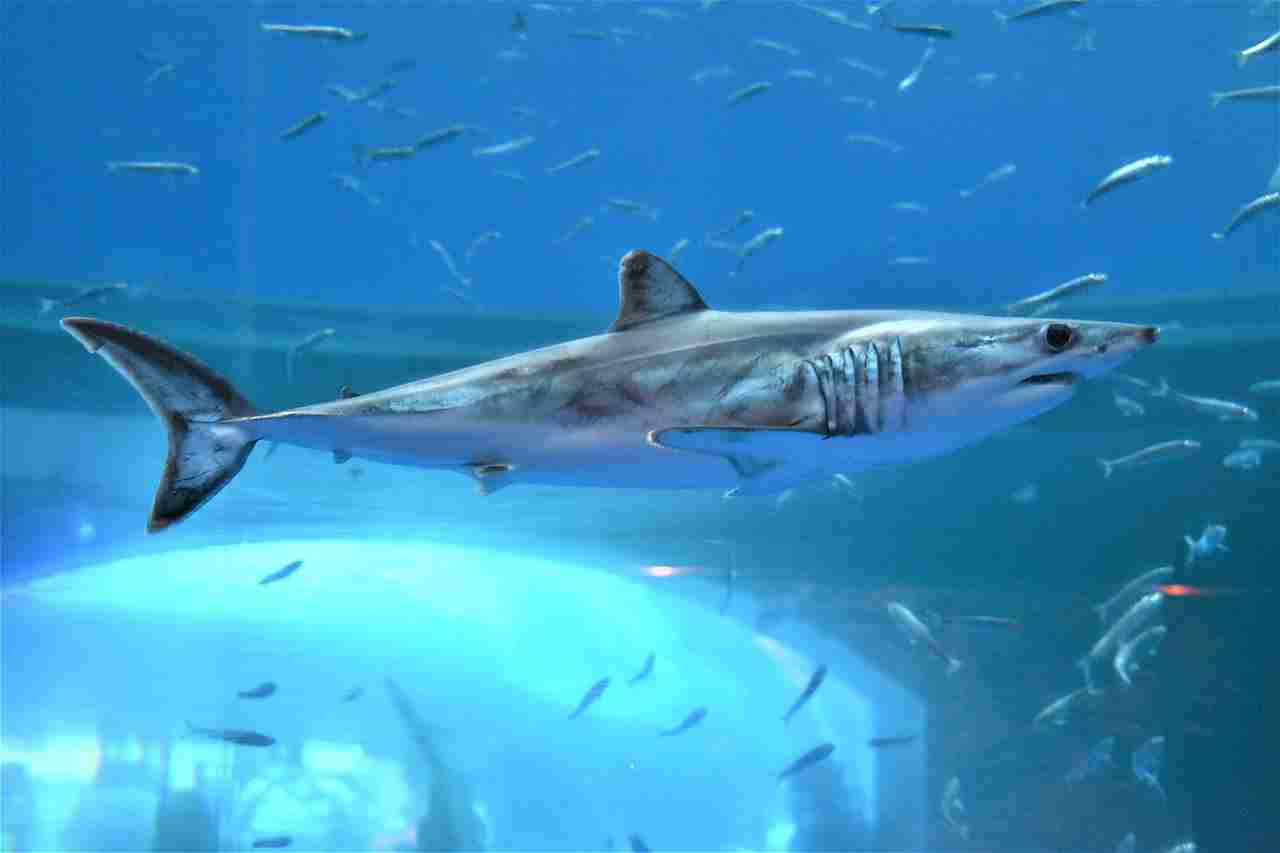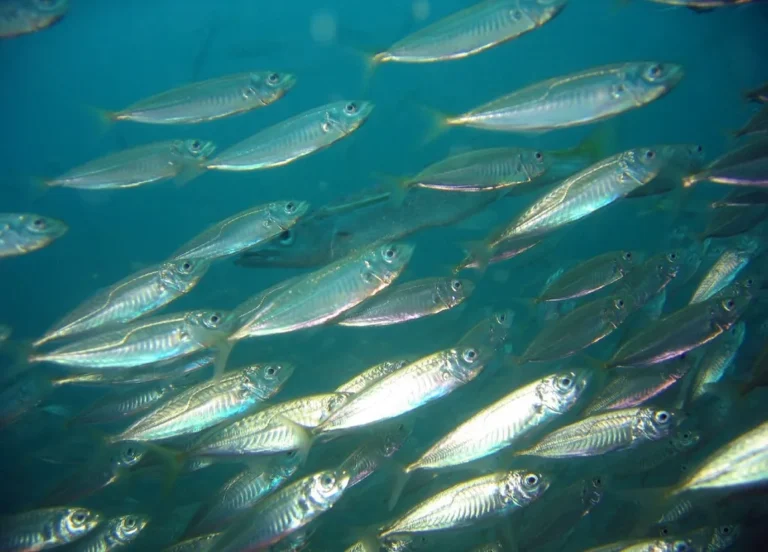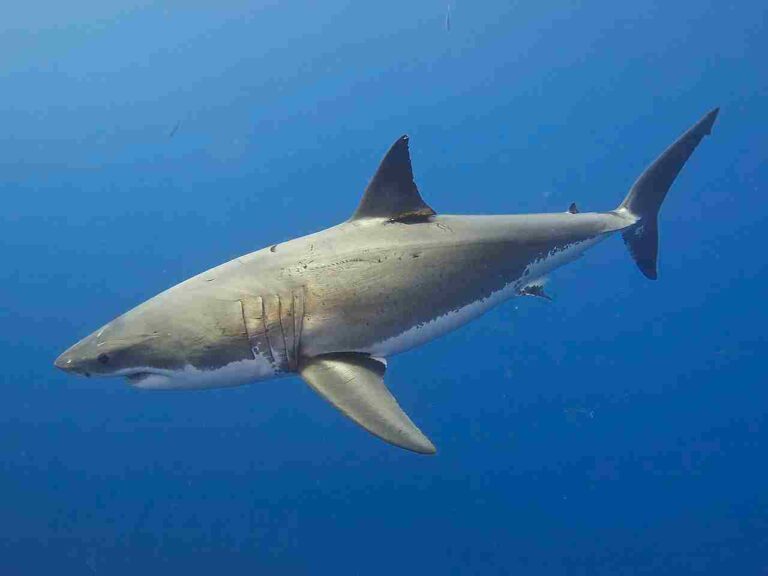Is a Shark a Consumer? Overview of The Trophic Position and Role of Sharks
A shark is a consumer in the aquatic ecosystem which it inhabits, because it cannot manufacture its own food and must prey on other organisms within its environment, to acquire the energy and nutrients needed for its survival.
This article discusses the consumer status and role of sharks.
Reason Why a Shark is a Consumer
1. Sharks Do Not Manufacture Their Own Food
Sharks are fascinating creatures that play a crucial role in marine ecosystems. One of the main reasons why sharks are considered consumers is because they do not manufacture their own food. Unlike plants and some other organisms, sharks are unable to perform photosynthesis or any other process that allows them to produce their own energy from sunlight. Instead, they rely on other organisms as sources of food.
Sharks are carnivorous predators, which means they primarily feed on other animals. They have a diverse diet that includes fish, seals, sea turtles, and even other sharks. This reliance on consuming other organisms is what classifies them as consumers in the food chain. They occupy a higher trophic level compared to primary producers like plants and algae.
The trophic position of sharks as consumers is further supported by their feeding habits. They are not detritivorous, which means they do not consume dead organic matter like detritus. Additionally, sharks are not saprophytic, meaning they do not obtain nutrients from decaying organic matter. Instead, they actively hunt and capture live prey to satisfy their nutritional needs.
Sharks are often referred to as apex predators, which means they are at the top of the food chain in their respective habitats. This designation is due to their large size, powerful jaws, and predatory behavior. As consumers, sharks have a significant trophic impact on their ecosystems. They help regulate populations of their prey species, which in turn affects the abundance and distribution of other organisms within the food web.
2. Other Organisms are Food Sources for Sharks
Another reason why sharks are considered consumers is their reliance on other organisms as sources of food. Sharks have a diverse diet that includes a wide range of marine species. This dependence on consuming other organisms is a key characteristic of consumers in the food chain.
Sharks are known for their carnivorous nature, meaning they primarily feed on other animals. Their diet consists of various marine creatures such as fish, seals, sea turtles, and even other sharks. This consumption of other organisms is what classifies sharks as consumers in the ecosystem.
By consuming other organisms, sharks play a vital role in maintaining the balance of marine ecosystems. They help regulate the populations of their prey species, preventing overpopulation and ensuring the survival of other organisms within the food web. This trophic interaction is essential for the overall health and stability of the ecosystem.
Sharks are often apex predators in their respective habitats, occupying the top position in the food chain. Their large size, powerful jaws, and predatory behavior make them formidable hunters. As consumers, sharks have a significant trophic impact on their ecosystems.
The consumption of other organisms by sharks also contributes to the transfer of energy within the food web. As they consume lower trophic level organisms, the energy stored in those organisms is transferred to the sharks. This energy transfer is crucial for the sustenance and growth of the shark population.
Furthermore, the feeding habits of sharks demonstrate their role as consumers. They actively hunt and capture live prey, showcasing their predatory behavior. This behavior is characteristic of consumers, as they actively seek out and consume other organisms for their nutritional needs.
3. Sharks are Neither Detritivorous Nor Saprophytic
Sharks are neither detritivorous nor saprophytic, which means they are not decomposers. While some sharks can act as scavengers, their role as consumers is primarily focused on actively hunting and consuming other organisms. This distinction sets them apart from detritivores and saprophytes, which play a crucial role in the decomposition process.
Detritivores are organisms that feed on dead organic matter, such as decaying plants and animals. They break down this organic material into smaller particles, which are then further decomposed by bacteria and fungi. Examples of detritivores include earthworms, millipedes, and certain species of insects. Sharks, on the other hand, do not rely on dead organic matter as their primary food source. They are carnivorous predators that actively seek out live prey.
Similarly, saprophytes are organisms that obtain nutrients by decomposing dead organic matter. They play a vital role in the recycling of nutrients in ecosystems by breaking down dead plants and animals. Fungi, such as mushrooms and molds, are common examples of saprophytes. Unlike saprophytes, sharks do not participate in the decomposition process. They obtain their nutrients directly from consuming other organisms, rather than relying on decomposed organic matter.
Sharks’ role as consumers is essential for maintaining the balance of marine ecosystems. They occupy various trophic levels depending on their diet and the availability of prey species. Some sharks are apex predators, occupying the top position in the food chain, while others may be lower-level consumers. Regardless of their trophic position, sharks have a significant impact on the populations of their prey species.
Sharks’ consumption of other organisms contributes to the transfer of energy within the food web. As they consume lower trophic level organisms, the energy stored in those organisms is transferred to the sharks. This energy transfer is crucial for the sustenance and growth of the shark population, as well as for the overall functioning of the ecosystem.
While some sharks can scavenge on carrion, their role as scavengers is not their primary mode of obtaining food. Sharks are highly efficient hunters, equipped with specialized adaptations such as sharp teeth, powerful jaws, and keen senses. They actively seek out and capture live prey, showcasing their predatory behavior. This behavior is characteristic of consumers, as they actively obtain their nutritional needs by consuming other organisms.
What Type of Consumer is a Shark?
A shark is a top-level consumer or apex predator in the marine ecosystem. This classification is based on several factors, including its size, predatory adaptations, and the trophic cascading effect it has on the marine food chain. Sharks are usually classified as either tertiary or quaternary consumers, depending on the species richness and diversity of their habitat, as well as the presence of other predators.
Sharks are often considered apex predators because they have no natural predators in their habitat. They occupy the highest trophic level in the food chain, feeding on a wide range of prey species. Their large size, powerful jaws, and sharp teeth make them highly efficient hunters. These predatory adaptations allow them to actively seek out and capture live prey, establishing their role as consumers in the ecosystem.
The classification of sharks as either tertiary or quaternary consumers depends on the presence of other higher-level consumers in their habitat. In the presence of a large and active population of higher consumers, such as orcas, sharks may be classified as tertiary consumers. This is because they are one level below these larger predators in the food chain. However, in ecosystems where sharks are the top predators and there are no other significant predators above them, they are considered apex predators or quaternary consumers.
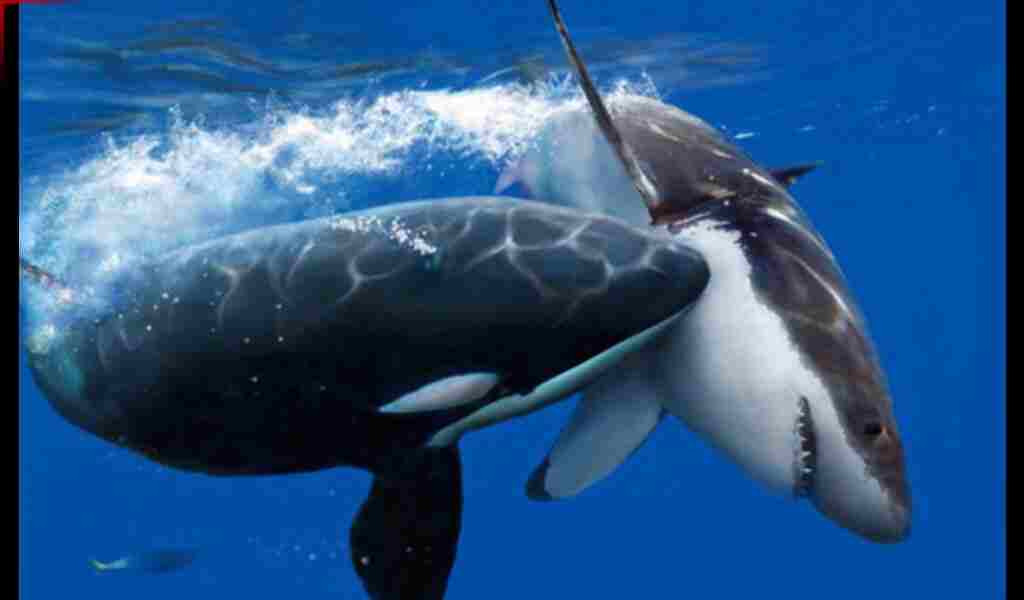
Sharks play a crucial role in maintaining the balance of marine ecosystems. As top-level consumers, they have a significant impact on the populations of their prey species. By regulating the abundance and distribution of these prey species, sharks help to prevent overpopulation and maintain the overall health of the ecosystem.
The trophic cascading effect of sharks is particularly important in controlling the populations of lower trophic level organisms. As sharks consume lower-level consumers, the energy stored in those organisms is transferred to the sharks. This energy transfer helps to regulate the abundance of prey species and maintain the balance of the food web.
Is a Shark a Primary Consumer?
Sharks, despite their position as top-level consumers in the marine ecosystem, are not considered primary consumers. Unlike primary consumers, such as small fish and zooplankton, sharks do not rely on plants or algae as their primary food source. Instead, they are carnivorous predators that feed on a wide range of prey species, including fish, seals, and even other sharks.
One of the main reasons why sharks are not classified as primary consumers is their diet. Primary consumers, also known as herbivores, obtain their energy by consuming plants or algae. They play a crucial role in the food chain by converting the energy stored in plants into a form that can be utilized by other organisms. However, sharks do not consume plants or algae directly, making them unsuitable for the primary consumer category.
Another factor that sets sharks apart from primary consumers is their trophic impact on the ecosystem. While primary consumers have a relatively low trophic impact, sharks exert a far greater effect on the marine food chain. As apex predators, they regulate the populations of their prey species, which in turn affects the abundance and distribution of lower trophic level organisms. This trophic cascading effect helps to maintain the balance of the ecosystem and prevent overpopulation of certain species.
Sharks’ large size and predatory adaptations also contribute to their classification as tertiary and quaternary consumers. Their powerful jaws, sharp teeth, and streamlined bodies make them highly efficient hunters. These adaptations allow them to actively seek out and capture live prey, establishing their role as consumers in the ecosystem. Additionally, sharks have no natural predators in their habitat, further solidifying their position as top-level consumers.
Reasons Why Sharks are Not Primary Consumers
1. They are Not Herbivorous
Sharks are not herbivorous, which is one of the reasons why they are not considered primary consumers. Unlike primary consumers, which feed on plants and algae, sharks primarily feed on other organisms. Their diet consists of a variety of marine animals such as krill, copepods, jellyfish, and parrotfish. These prey items are not primary producers but rather secondary or tertiary consumers in the food chain.
By consuming these organisms, sharks occupy a higher trophic level in the food chain. They are predators that play a crucial role in regulating the populations of their prey species. This predatory behavior distinguishes them from primary consumers, which rely on plant-based food sources.
Sharks have evolved specialized adaptations for capturing and consuming their prey, such as sharp teeth, powerful jaws, and streamlined bodies for efficient swimming. These adaptations allow them to hunt and consume a wide range of marine organisms, including fish, marine mammals, and other sharks.
2. Sharks are Larger than Primary Consumers in their Environment
Sharks are larger than primary consumers in their environment, which is another reason why they are not considered primary consumers. Primary consumers, such as small fish and invertebrates, are typically preyed upon by larger predators, including sharks. Sharks, on the other hand, occupy a higher trophic level as top predators in the food chain.
Their large size allows them to consume a wide range of prey, including smaller fish, marine mammals, and even other sharks. This size advantage gives them the ability to exert control over the populations of their prey species and maintain the balance of the ecosystem.
Sharks have evolved powerful jaws and teeth that enable them to capture and consume their prey efficiently. Their streamlined bodies and strong swimming abilities also contribute to their success as apex predators. These adaptations, combined with their size, make them formidable hunters in their environment.
By being larger than primary consumers, sharks have a significant trophic impact on the food chain. They regulate the populations of their prey species, preventing them from becoming overabundant and maintaining the overall health and balance of the ecosystem.
3. The Trophic Impact of Sharks Far Exceeds That of Primary Consumers
The trophic impact of sharks far exceeds that of primary consumers, which is another reason why they are not classified as primary consumers. While primary consumers play an important role in the food chain by consuming producers, such as plants or algae, sharks occupy a higher trophic level as top predators.
Sharks have a significant impact on the populations of their prey species. Their large size and predatory behavior allow them to control the abundance and distribution of their prey, preventing any one species from becoming overpopulated. This regulation of prey populations helps to maintain the balance of the ecosystem and ensures the survival of other organisms within the food web.
Unlike primary consumers, sharks are not limited to consuming only producers. They have a diverse diet that includes a wide range of prey, such as smaller fish, marine mammals, and even other sharks. This versatility in their feeding habits allows them to exert a greater influence on the trophic dynamics of the ecosystem.
Furthermore, sharks have evolved specialized adaptations that make them highly efficient predators. Their powerful jaws and sharp teeth enable them to capture and consume their prey effectively. Additionally, their streamlined bodies and strong swimming abilities allow them to pursue and catch fast-moving prey. These adaptations, combined with their size and strength, make sharks formidable hunters and contribute to their trophic impact.
The trophic impact of sharks extends beyond their direct consumption of prey. As top predators, they play a crucial role in maintaining the overall health and balance of the ecosystem. By regulating the populations of their prey species, sharks prevent any one species from dominating the food chain and ensure the survival of a diverse range of organisms.
Are Sharks Tertiary Consumers?
Sharks can indeed be classified as tertiary consumers due to their role as apex predators in the food chain. In a typical food chain with five trophic levels, sharks occupy the highest level as top predators. However, it is important to note that their classification as tertiary consumers may vary depending on the presence of other predators in their ecosystem.
As apex predators, sharks have a significant impact on the trophic dynamics of their environment. They play a crucial role in regulating the populations of their prey species, which can include smaller fish, marine mammals, and even other sharks. By controlling the abundance and distribution of their prey, sharks help maintain the balance of the ecosystem and ensure the survival of a diverse range of organisms.
The trophic impact of sharks extends beyond their direct consumption of prey. They also influence the behavior and distribution of other predators in their habitat. For example, the presence of sharks can affect the feeding patterns and movements of secondary consumers like seals, which in turn can impact the populations of their own prey.
Reasons Why Sharks are Tertiary Consumers
1. Relatively Large Size and Trophic Impact
One of the key reasons why sharks are considered tertiary consumers is their relatively large size and trophic impact. Sharks are apex predators in their ecosystems, meaning they are at the top of the food chain and have no natural predators in their habitat. This allows them to exert a significant influence on the trophic dynamics of their environment.
Sharks are known for their impressive size, with some species reaching lengths of over 20 feet and weighing several tons. Their large size gives them the ability to consume a wide range of prey, including other large marine animals such as seals, sea lions, and even other sharks. This makes them top-level predators and places them in the tertiary consumer category.
The trophic impact of sharks is also a crucial factor in their classification as tertiary consumers. As apex predators, sharks play a vital role in regulating the populations of their prey species. By preying on smaller marine animals, sharks help to control their numbers and prevent overpopulation. This, in turn, has a cascading effect on the entire ecosystem, influencing the abundance and distribution of other organisms within the food web.
Furthermore, sharks have a unique feeding behavior that contributes to their trophic impact. They are known for their ability to detect and locate prey using their highly developed senses, such as electroreception and keen olfaction. Once they have located their prey, sharks employ various hunting strategies, including ambush attacks and swift pursuits, to capture and consume their target. This efficient feeding behavior allows them to exert a significant influence on the trophic dynamics of their environment.
2. Sharks Have No Natural Predators in Their Habitat
Another reason why sharks are classified as tertiary consumers is the fact that they have no natural predators in their habitat. This lack of predators allows them to occupy the top position in the food chain and consume organisms from lower trophic levels.
Sharks have evolved over millions of years to become highly efficient predators. Their streamlined bodies, powerful jaws, and sharp teeth make them formidable hunters. With no natural predators to fear, sharks have the freedom to roam and feed without the constant threat of being preyed upon.
This absence of natural predators gives sharks a unique advantage in their environment. They are able to consume a wide variety of prey, ranging from smaller fish and marine mammals to larger animals such as seals and sea lions. This diverse diet contributes to their position as tertiary consumers, as they feed on organisms from multiple trophic levels.
The absence of natural predators also allows sharks to exert a significant influence on the trophic dynamics of their ecosystem. Without the regulation of predation, prey populations can become unbalanced and lead to ecological disruptions. Sharks help to maintain the balance by controlling the abundance of their prey species, preventing overpopulation and promoting the health of the ecosystem as a whole.
Furthermore, the lack of natural predators means that sharks have a longer lifespan compared to many other marine species. They are not subjected to the same level of predation pressure, allowing them to live longer and reach larger sizes. This longevity and size contribute to their role as top-level consumers, as they have the capacity to consume a substantial amount of biomass from lower trophic levels.
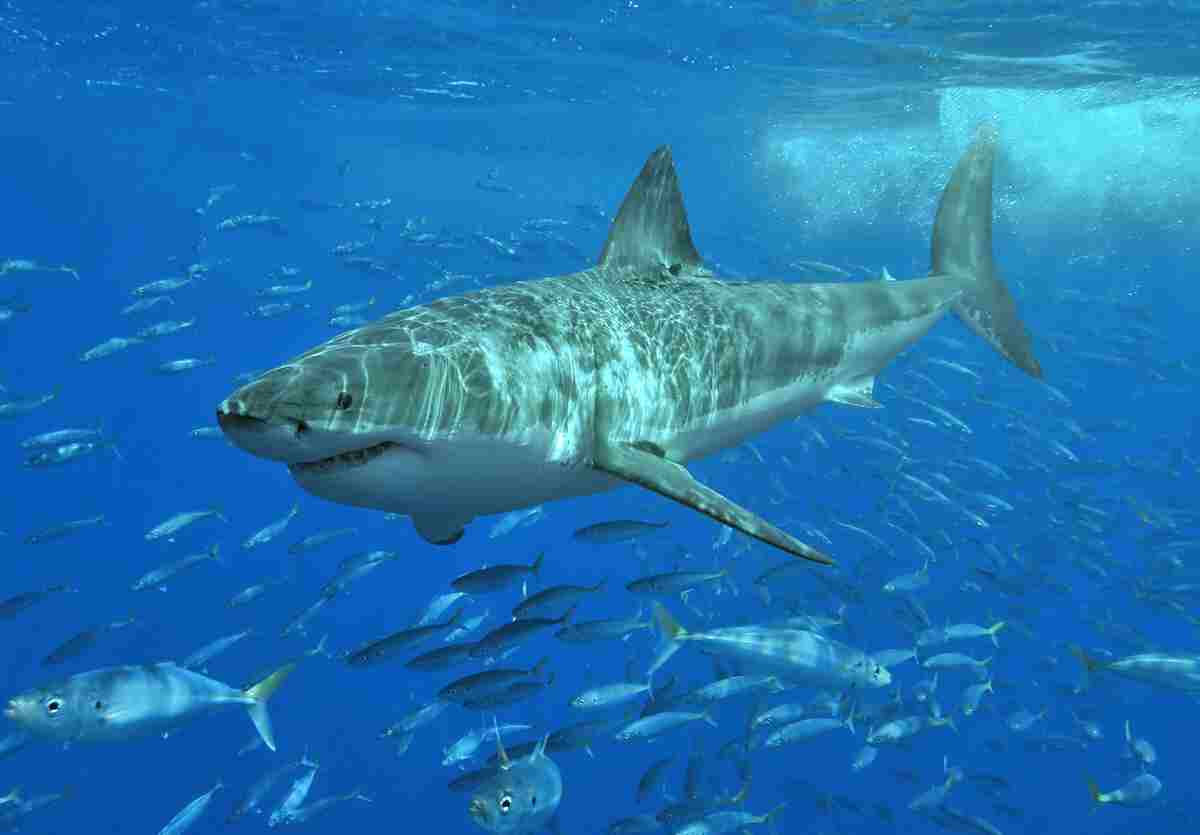
3. Secondary Consumers like Seals are For Sources for Sharks
Secondary consumers like seals play a crucial role in the trophic dynamics of the marine ecosystem, serving as a food source for sharks. This is one of the reasons why sharks are classified as tertiary consumers.
Seals are marine mammals that inhabit coastal areas and are known for their agility in the water. They primarily feed on fish, squid, and other smaller marine organisms. As secondary consumers, seals occupy a trophic level below sharks but above primary consumers like fish.
When seals become prey for sharks, they provide a significant source of energy and nutrients. Sharks are opportunistic predators and will target seals when given the chance. The high fat content in seals makes them an attractive food source for sharks, providing them with the energy they need to sustain their large bodies and active lifestyles.
The consumption of seals by sharks also contributes to the regulation of seal populations. Without predation pressure from sharks, seal populations could become overabundant and negatively impact the availability of prey species. By preying on seals, sharks help to maintain a balance in the ecosystem, ensuring the sustainability of both predator and prey populations.
In addition to seals, sharks also feed on other secondary consumers such as sea lions and dolphins. These marine mammals are also rich in nutrients and provide a valuable food source for sharks. The ability of sharks to prey on secondary consumers further solidifies their position as tertiary consumers in the food chain.
The consumption of secondary consumers by sharks has a cascading effect on the entire ecosystem. By controlling the abundance of these organisms, sharks indirectly influence the populations of primary consumers and the availability of resources for other species. This trophic impact highlights the important role that sharks play in maintaining the balance and health of marine ecosystems.
FAQs
1. Is a tiger shark a consumer?
Tiger sharks, like all sharks, are indeed consumers in the marine ecosystem. They do not manufacture their own food through photosynthesis or any other means. Instead, they rely on other organisms as sources of nutrition.
Throughout this article, we have discussed the trophic position and role of sharks, highlighting their consumption habits. Considering this, we can confidently answer the question: “Is a tiger shark a consumer?” with a resounding yes.
Tiger sharks, being apex predators, occupy a high trophic level in the food chain. They play a crucial role in regulating the populations of their prey species and maintaining the overall balance of the marine ecosystem.
In terms of their diet, tiger sharks are known to be opportunistic feeders, consuming a wide variety of prey. Their diet includes fish, seals, turtles, dolphins, and even other sharks. This diverse range of prey demonstrates their position as consumers within the ecosystem.
It is important to note that tiger sharks are not herbivorous. They primarily feed on other animals, making them carnivorous consumers. Their large size and predatory nature allow them to occupy a significant position in the food chain.
2. Is a Whale Shark a Producer or Consumer?
Whale sharks, like all sharks, are consumers in the marine ecosystem. They do not manufacture their own food through photosynthesis or any other means. Instead, they rely on other organisms as sources of nutrition.
As discussed earlier, sharks are carnivorous consumers, meaning they primarily feed on other animals. This holds true for whale sharks as well. Despite their massive size, whale sharks are filter feeders, consuming tiny plankton and small fish. They have a unique feeding mechanism that allows them to filter large volumes of water and extract their prey.
Whale sharks are known to have a diverse diet, consisting mainly of planktonic organisms such as krill, copepods, and small fish. They swim with their mouths open, filtering water through their gills and trapping the microscopic organisms on specialized filter pads. This feeding strategy classifies them as consumer sharks, as they rely on other organisms for their energy and nutrients.
In terms of their trophic position, whale sharks occupy a lower level in the food chain compared to apex predators like tiger sharks. They are considered secondary consumers, as they feed on primary consumers such as plankton. However, their large size and filter-feeding behavior allow them to have a significant trophic impact on the ecosystem.
3. Is Shark a Producer Herbivore or Carnivore?
Sharks are carnivores. They are top predators in the marine ecosystem and primarily feed on other animals. As discussed earlier, sharks do not manufacture their own food through photosynthesis or any other means. Instead, they rely on other organisms as sources of nutrition.
Sharks have a diverse diet, with different species exhibiting varying feeding behaviors and preferences. Some sharks are known to feed on smaller fish, while others target larger marine mammals or even other sharks. Their sharp teeth and powerful jaws are well-adapted for capturing and consuming prey.
In terms of their trophic position, sharks occupy a higher level in the food chain compared to primary consumers like herbivores. They are considered secondary or tertiary consumers, depending on their specific feeding habits and the ecosystem they inhabit.
Unlike herbivores, which consume plant matter, sharks are strictly carnivorous. They obtain their energy and nutrients by consuming other animals. This makes them an important part of the marine food web, as they help regulate populations of their prey species and maintain the balance of the ecosystem.
It’s important to note that while sharks are carnivores, they do not consume every organism they encounter. They have specific preferences and hunting strategies that are influenced by factors such as prey availability, habitat, and their own physiological characteristics.
4. Is a Shark a Top Level Consumer?
Yes, a shark can be considered a top-level consumer in the marine ecosystem. As discussed earlier, sharks occupy a higher trophic position in the food chain compared to primary consumers like herbivores. They are classified as secondary or tertiary consumers, depending on their specific feeding habits and the ecosystem they inhabit.
Sharks play a crucial role in maintaining the balance of the marine food web. Being top predators, they have a significant impact on the populations of their prey species. By regulating the abundance of their prey, sharks help to control the overall structure and dynamics of the ecosystem.
In terms of their trophic impact, sharks have a far-reaching influence that extends beyond primary consumers. They have the ability to shape the populations of other organisms in their habitat. This is due to their relatively large size, powerful hunting capabilities, and efficient energy transfer from one trophic level to another.
Furthermore, sharks have no natural predators in their environment, which further solidifies their position as top-level consumers. They are at the apex of the food chain, with no other organisms preying on them. This allows them to exert control over the lower trophic levels and maintain their status as apex predators.
Conclusion
* In conclusion, sharks can be classified as top-level consumers in the marine ecosystem due to their higher trophic position compared to primary consumers. They play a crucial role in maintaining the balance of the food web and have a significant impact on the populations of their prey species. Sharks are apex predators with no natural predators in their environment, allowing them to exert control over the lower trophic levels and maintain their status as top-level consumers.
* Sharks are not primary consumers because they are not herbivorous and their trophic impact far exceeds that of primary consumers. They are larger than primary consumers in their environment and have the ability to shape the populations of other organisms. Sharks are considered tertiary consumers due to their relatively large size, trophic impact, and the absence of natural predators in their habitat.



